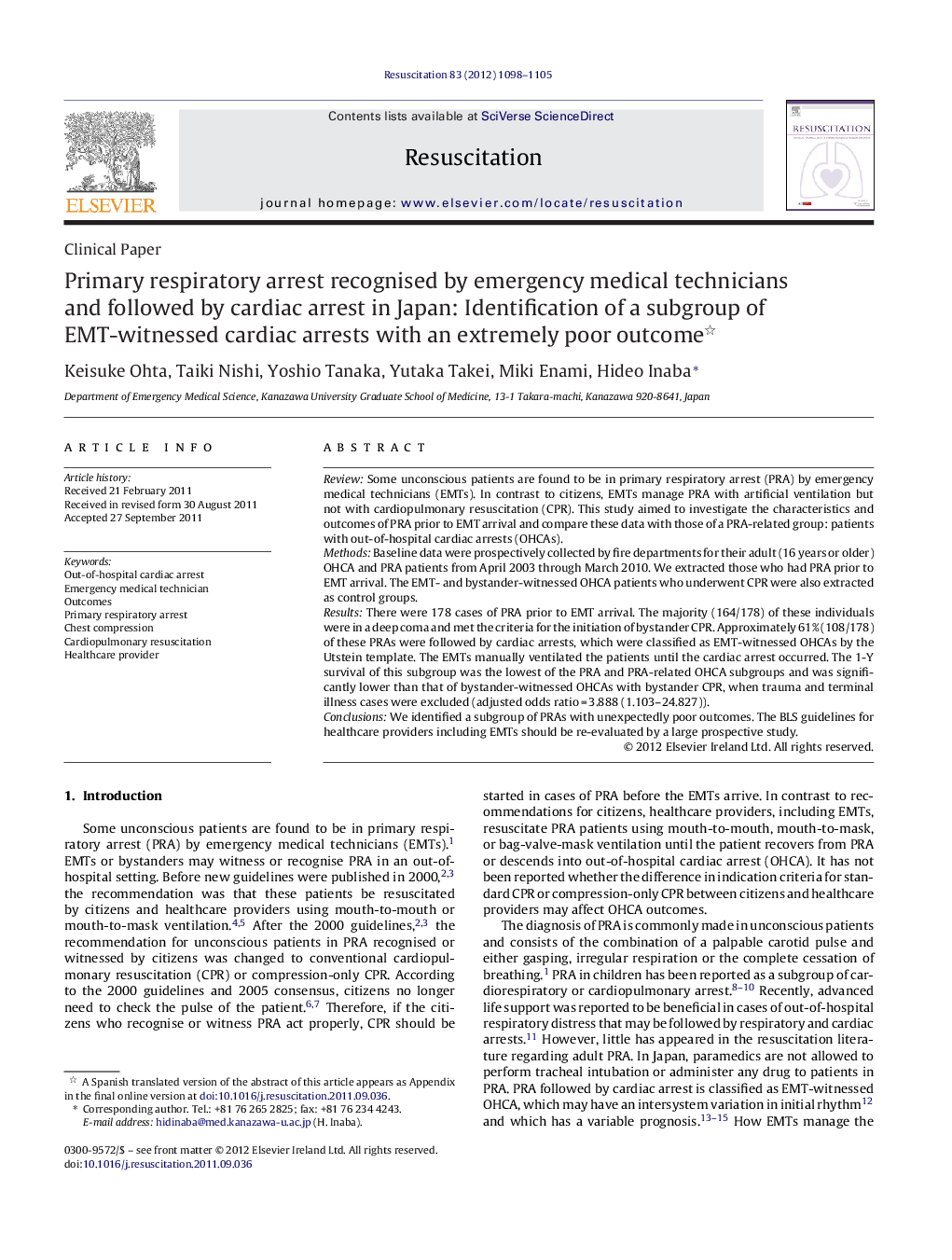| کد مقاله | کد نشریه | سال انتشار | مقاله انگلیسی | نسخه تمام متن |
|---|---|---|---|---|
| 5999019 | 1181462 | 2012 | 8 صفحه PDF | دانلود رایگان |

ReviewSome unconscious patients are found to be in primary respiratory arrest (PRA) by emergency medical technicians (EMTs). In contrast to citizens, EMTs manage PRA with artificial ventilation but not with cardiopulmonary resuscitation (CPR). This study aimed to investigate the characteristics and outcomes of PRA prior to EMT arrival and compare these data with those of a PRA-related group: patients with out-of-hospital cardiac arrests (OHCAs).MethodsBaseline data were prospectively collected by fire departments for their adult (16 years or older) OHCA and PRA patients from April 2003 through March 2010. We extracted those who had PRA prior to EMT arrival. The EMT- and bystander-witnessed OHCA patients who underwent CPR were also extracted as control groups.ResultsThere were 178 cases of PRA prior to EMT arrival. The majority (164/178) of these individuals were in a deep coma and met the criteria for the initiation of bystander CPR. Approximately 61% (108/178) of these PRAs were followed by cardiac arrests, which were classified as EMT-witnessed OHCAs by the Utstein template. The EMTs manually ventilated the patients until the cardiac arrest occurred. The 1-Y survival of this subgroup was the lowest of the PRA and PRA-related OHCA subgroups and was significantly lower than that of bystander-witnessed OHCAs with bystander CPR, when trauma and terminal illness cases were excluded (adjusted odds ratio = 3.888 (1.103-24.827)).ConclusionsWe identified a subgroup of PRAs with unexpectedly poor outcomes. The BLS guidelines for healthcare providers including EMTs should be re-evaluated by a large prospective study.
Journal: Resuscitation - Volume 83, Issue 9, September 2012, Pages 1098-1105